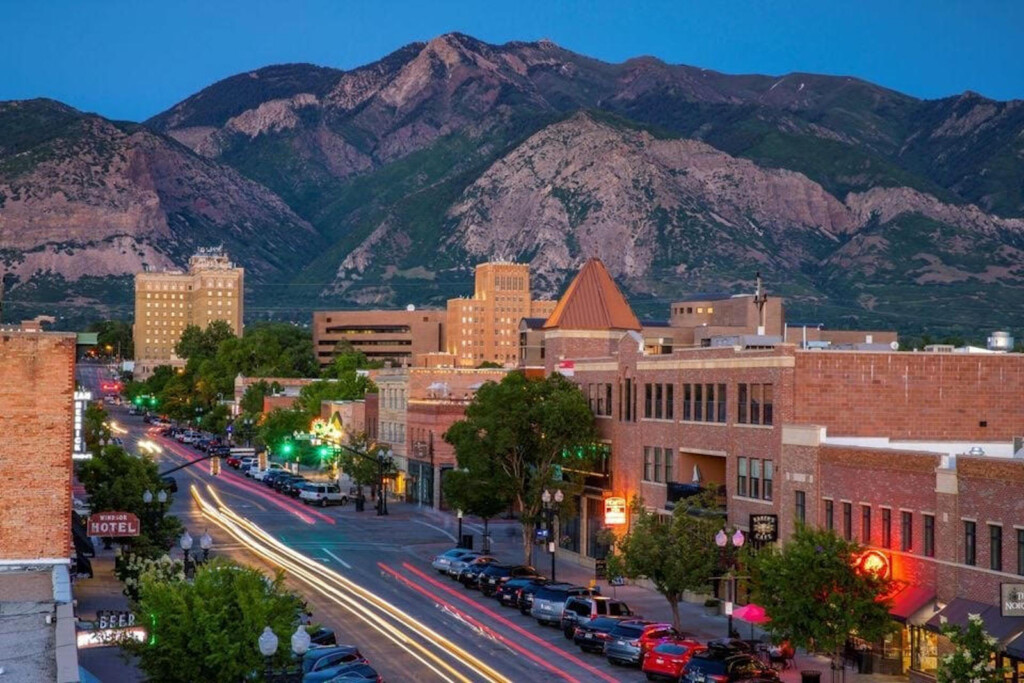OGDEN — Last fall, a series of life-upending events — a layoff, car trouble, a truck crash that sent two of her kids to the hospital — left Amanda Neeley unable to pay rent. The mother of four moved in with her 20-year-old daughter and applied for housing assistance.
This month, she visited the Weber Housing Authority to get an update on her application. She’s still on the waitlist — number 710 of 1,356.
“At least I’m on the list,” she said.
The waitlist for federal Section 8 housing choice vouchers in Weber County is the longest it’s ever been, according to Andi Beadles, the authority’s executive director. The wait time for an applicant who signs up today, she estimates, is four years.
At the Ogden Housing Authority, the waitlist is over 2,000 people long.
“It’s just discouraging,” Beadles said. “We want to be able to help everyone.”
Across the US, home prices and rental rates have soared to record highs. Housing costs in Utah, analysts say, are greater than ever.
But what about housing in Ogden, long considered one of the Wasatch Front’s affordable holdouts?
“It used to be when you couldn’t afford a house anywhere else, well, you’d go to Ogden,” said Travis Stokes, a local broker and realtor. That’s changing, Stokes says. A walkable, hip downtown, with more events and a growing arts and culture scene, have made the city more desirable. At the end of last year, the median home sales price was $360,000 — just two thirds of the $539,000 statewide average. But Stokes expects it will catch up.
For Ogden home buyers right now, he said, “the pickings are slim.”
Gov. Spencer Cox has repeatedly emphasized a need to house low- and middle-income Utahns, and signed multiple housing bills this legislative session that are supposed to help.
But in Ogden, City Council Chairman Ken Richey says, that’s only part of the solution. “We’re missing housing across all levels,” he said, even for high-income earners.
Here’s how Marcia White, the council’s vice chairwoman, explained it: “Let’s say I can afford a $500,000 home, but there are none available. What should I do? I start to look at the $400,000 homes. Well, the people that can afford $400,000 now go down to $300,000.”
The result? Those looking to buy low-cost housing get outbid or pushed out of the market altogether.
What about rentals?
The average rent in Weber County increased 63 percent from 2018 to 2022, according to the Kem C. Gardner Policy Institute, the most of any Wasatch Front county.
Wages haven’t kept up, Beadles says. “That’s forcing more working people to apply for [housing] assistance.”
Some residents say Ogden has plenty of affordable housing already. They point to a 2022 study by the Wasatch Front Regional Council as proof: 65 percent of the county’s affordable housing is located in Ogden.
Beadles says the city needs more. Ogden has the largest urban population in the county, along with more jobs and more public transport, on which many people with low incomes rely. New apartment buildings and “Now Leasing” signs have recently popped up across the city, but Beadles says most are being offered at market rate or more. That means about $1,300 plus utilities and fees for a one-bedroom unit, according to Rent.com.
She notes one exception: Lotus Riverwalk, an apartment complex on 20th Street and Wall Avenue, between Walmart and the Ogden River. “It’s just beautiful.”

Rethinking “affordable”
An affordable housing development, Lotus Riverwalk features large, open units, oversized closets, quartz countertops and in-unit washers and dryers. There’s also a club room and a barbecue area, with direct access to walking paths along the river.
Crystal Fleming of Evergreene Management Group, which manages the property, estimates rents are half as much as those of comparable apartments. Yet, she said, “It’s often mistaken as a conventional market rate property.”
Hannah Matherne, 38, moved into a one-bedroom unit in December, and said it felt “absolutely amazing.” She had spent several months looking for an apartment that would accept her Section 8 voucher. “It was frustrating,” she said. “But if you don’t give up it pays off.”
Vouchers aren’t required at Riverwalk. An individual who earns less than 60 percent of Ogden’s area median income may also qualify. That’s $44,700 a year before taxes, or $21.50 per hour for full-time workers. For a couple, it’s $51,120.
“The vast majority of people entering the workforce out of college qualify for this housing,” said Adam Hughes, vice president of operations at the Lotus Co., Riverwalk’s developer and owner.
Bryan Wrigley, the company’s founder and CEO, estimates that about 40 percent of Ogden’s city employees would qualify as well.
His goal? To set an example for the community with “dignified” housing of “unbelievable quality” that working people can afford.
The word affordable — which he says can imply cheap and rundown — makes him cringe. He prefers “attainable workforce housing.”
“If I were in that phase in my life, and that circumstance in my life, I would be proud and blessed to live there.”
The income restrictions apply to all 110 units and the 174 more that will become available in September.
At Riverwalk, increases in a tenant’s income don’t trigger higher rents. It’s a “safety net,” Hughes said, that avoids what he calls the “reverse incentive” that plagues properties for mixed-income renters — and it could help residents save for a future down payment on a house.
Feature image of Ogden City courtesy of Visit Ogden.






